Properly preparing drywall before painting is essential for achieving a flawless, long-lasting finish. Many homeowners underestimate how important surface prep is, which often leads to peeling paint, uneven coverage, and visible imperfections. This guide covers everything you need to know—from cleaning and repairing drywall to priming and sanding—so your paint job looks professional and stands the test of time.
Prepping Drywall for Paint

Prepping drywall for paint is a crucial step to achieve a smooth, durable finish and a professional look. Skipping this process can cause uneven coverage, peeling, or visible imperfections like cracks and dents that affect your walls’ appearance. By following the right steps, you’ll ensure the paint adheres evenly and lasts longer, giving your space a fresh, polished feel.
Can You Paint Straight onto Drywall?
You shouldn’t paint directly onto drywall without proper prep. Drywall is super porous, so if you skip primer, the paint will soak in unevenly, leading to a blotchy, rough finish. Always apply a good drywall primer first—it seals the surface and helps the paint go on smoothly and evenly.
How do You Get Paint to Stick to Drywall?
To get paint to stick to drywall, you need to prep the surface properly. Start by cleaning the drywall to remove dust and dirt. Following that, fill in any imperfections like cracks or holes with joint compound, then gently sand the surface to ensure it’s even and ready for paint. Once that’s done, apply a coat of primer. Primer helps seal the drywall and creates a smooth, even surface for the paint to adhere to. After the primer dries, you can paint, and the paint will stick much better and last longer!
How do You Clean Drywall Before Painting?
To clean drywall before painting, start by dusting off any loose dirt or debris with a dry cloth or a vacuum with a soft brush attachment. If there are any spots or stains, gently wipe them with a damp cloth. Just make sure the drywall isn’t too wet, as excessive moisture can damage it. Ensure the surface is completely dry before proceeding to the next step of prepping drywall for paint. Keeping it clean ensures your paint sticks well and looks smooth!
What Happens if You Paint Drywall Without Primer?
If you paint drywall without primer, the paint may not adhere properly, leading to uneven coverage, blotchy spots, and a less durable finish. The paint can also soak into the drywall, causing it to look patchy or dull. Without primer, the drywall might absorb moisture from the paint, which can result in peeling or cracking over time. Using a primer helps create a smooth, even base for the paint to stick to and ensures a more professional and long-lasting finish. “Related post: What is primer paint?”
Do You Sand Drywall Before or After Primer?
Allow the joint compound to dry thoroughly before sanding the drywall surface smoothly, as sanding drywall before applying primer ensures an even base for paint to adhere properly. Once sanding is complete, remove all dust thoroughly to ensure the drywall primer sticks properly. Applying a high-quality primer on a clean, sanded drywall surface improves paint adhesion and results in a long-lasting, flawless finish.
How to Prep Drywall for Paint

The most important step in preparing drywall for painting is to create a smooth and even surface. First, apply joint compound to seams and screw holes, then sand the surface to eliminate imperfections. Next, use a primer to ensure even paint absorption and better adhesion. Finally, clean off any dust or debris to achieve a flawless finish. Skipping these steps can lead to uneven paint coverage, stains, and poor adhesion. Here are all the details!
1. Clean the Drywall
Before doing anything, remove dust, dirt, and debris from the drywall. Use a dry cloth, a vacuum with a brush attachment, or a microfiber duster to ensure the surface is free from loose particles. Any dust left behind can prevent the paint from adhering properly. “Related article: How to clean painted walls without leaving streaks.”
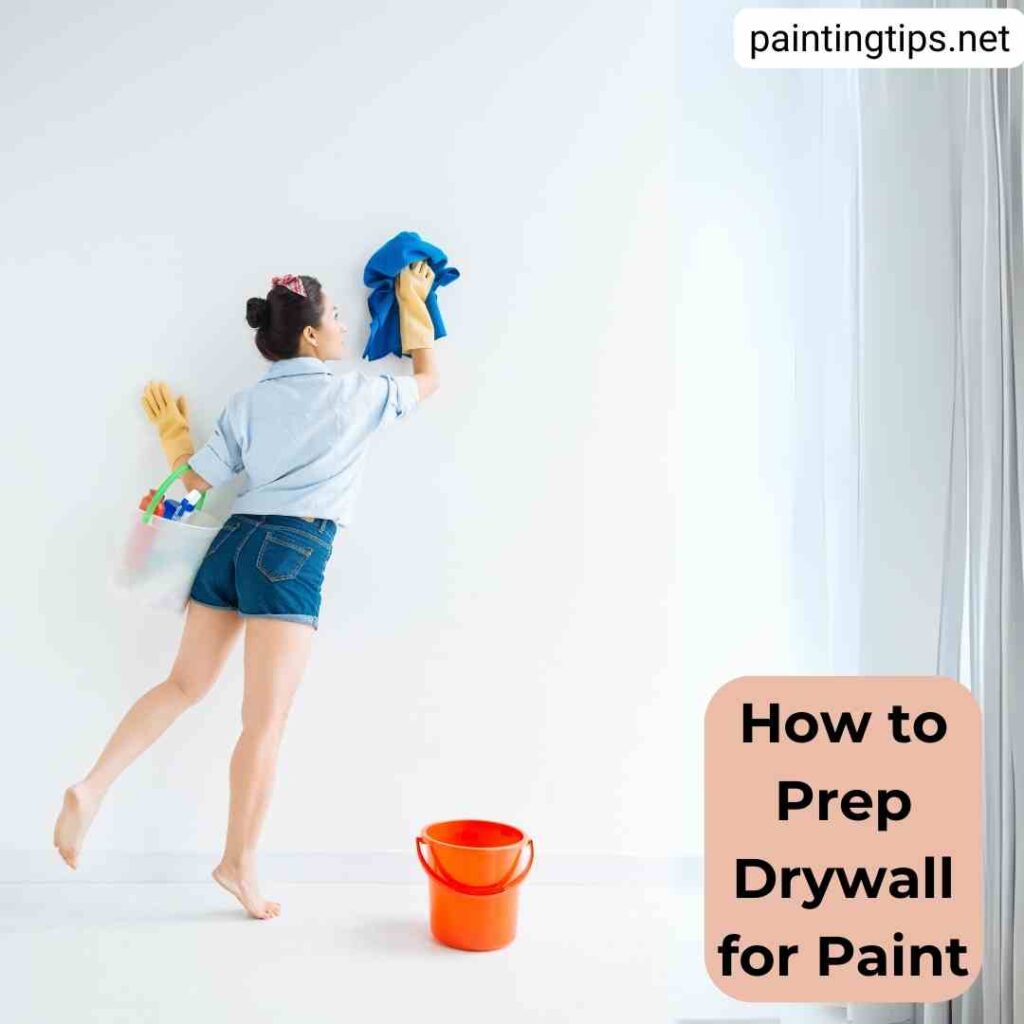
2. Inspect for Imperfections
Carefully examine the drywall for cracks, nail holes, dents, or uneven seams. Even small imperfections can become more noticeable after painting. Mark any problem areas so you don’t miss them in the next steps. “Related article: wall crack repair.”
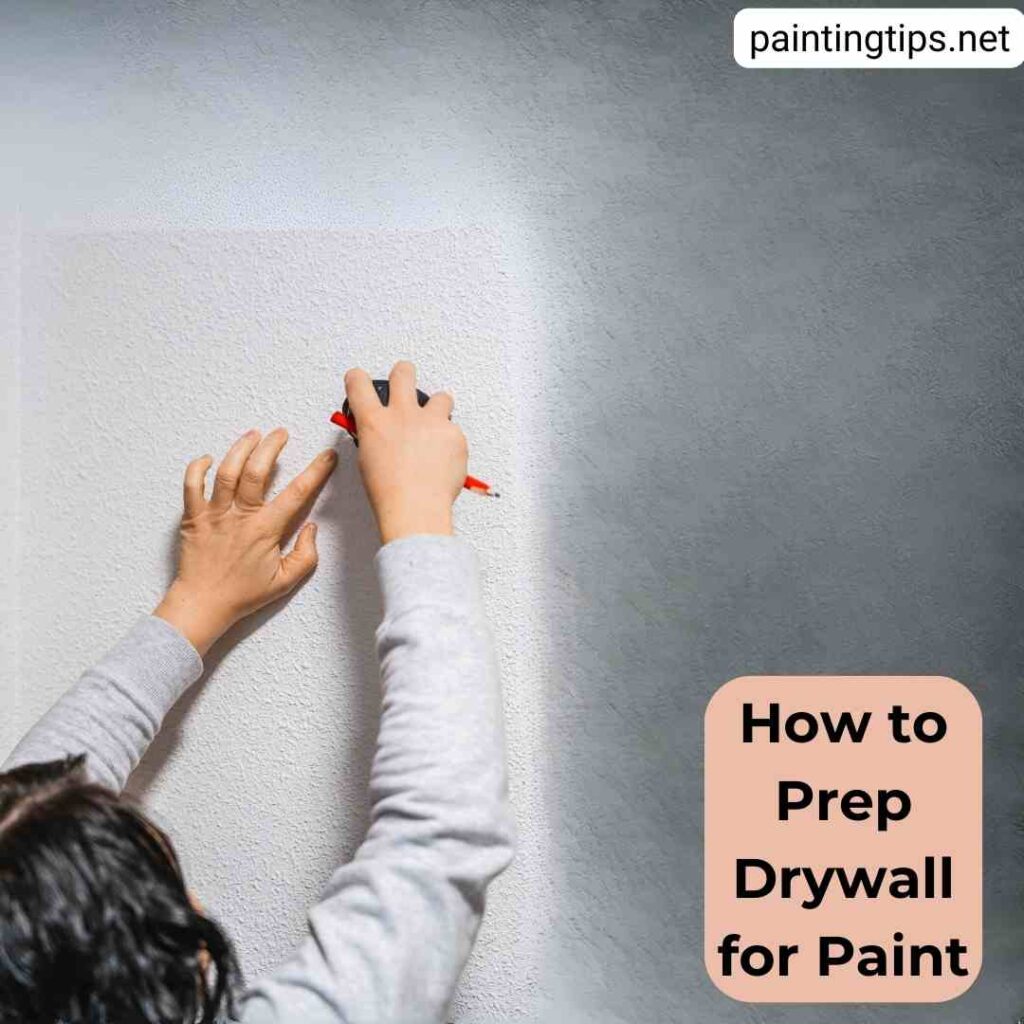
3. Apply Joint Compound to Fill Gaps and Holes
Use a putty knife to apply joint compound (also called drywall mud) over any holes, cracks, or uneven joints. For larger gaps, apply the compound in thin layers, allowing each layer to dry before adding another. Smooth the surface thoroughly to minimize the amount of sanding needed before priming and painting.
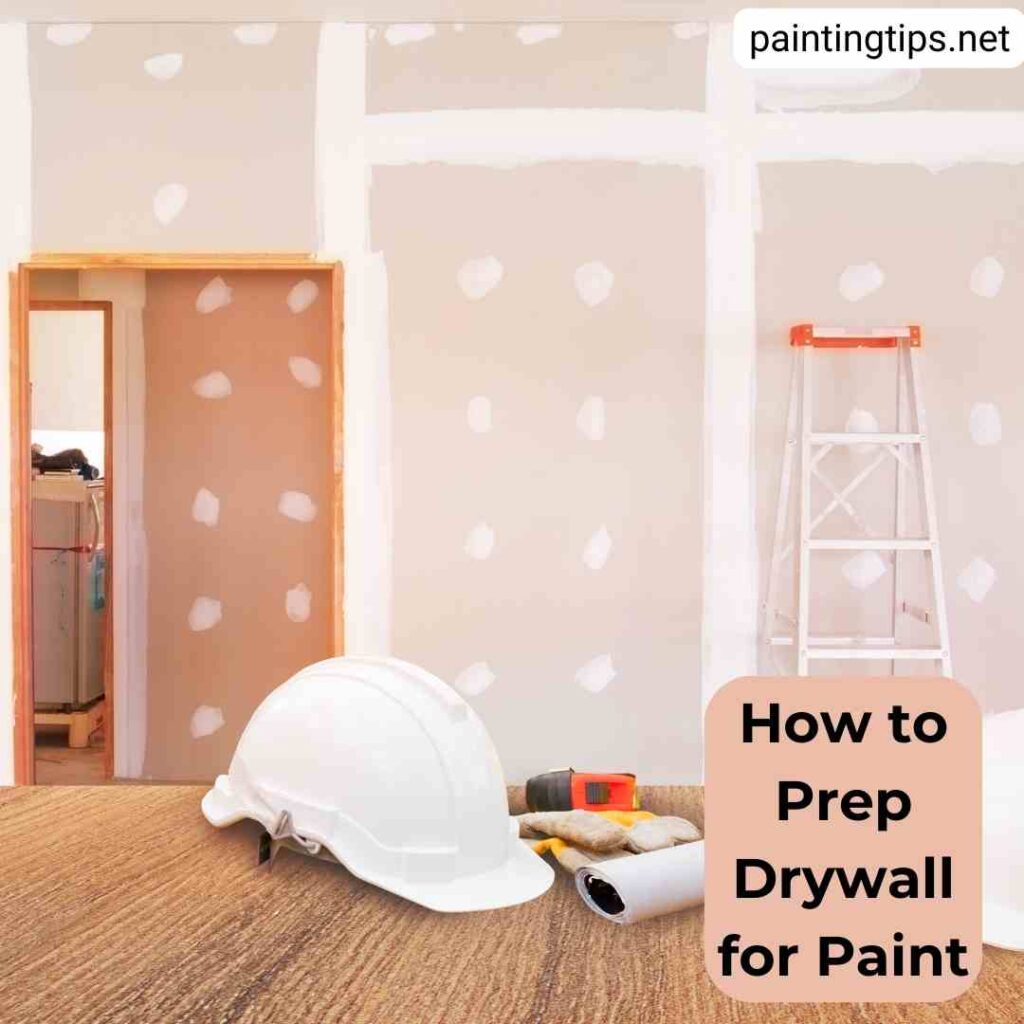
4. Sand the Surface for Smoothness
Once the joint compound is fully dry (which can take a few hours or overnight), use fine-grit sandpaper (150–200 grit) to smooth out the surface. Sanding removes excess compound and ensures an even finish. Sand gently to prevent any damage to the drywall.
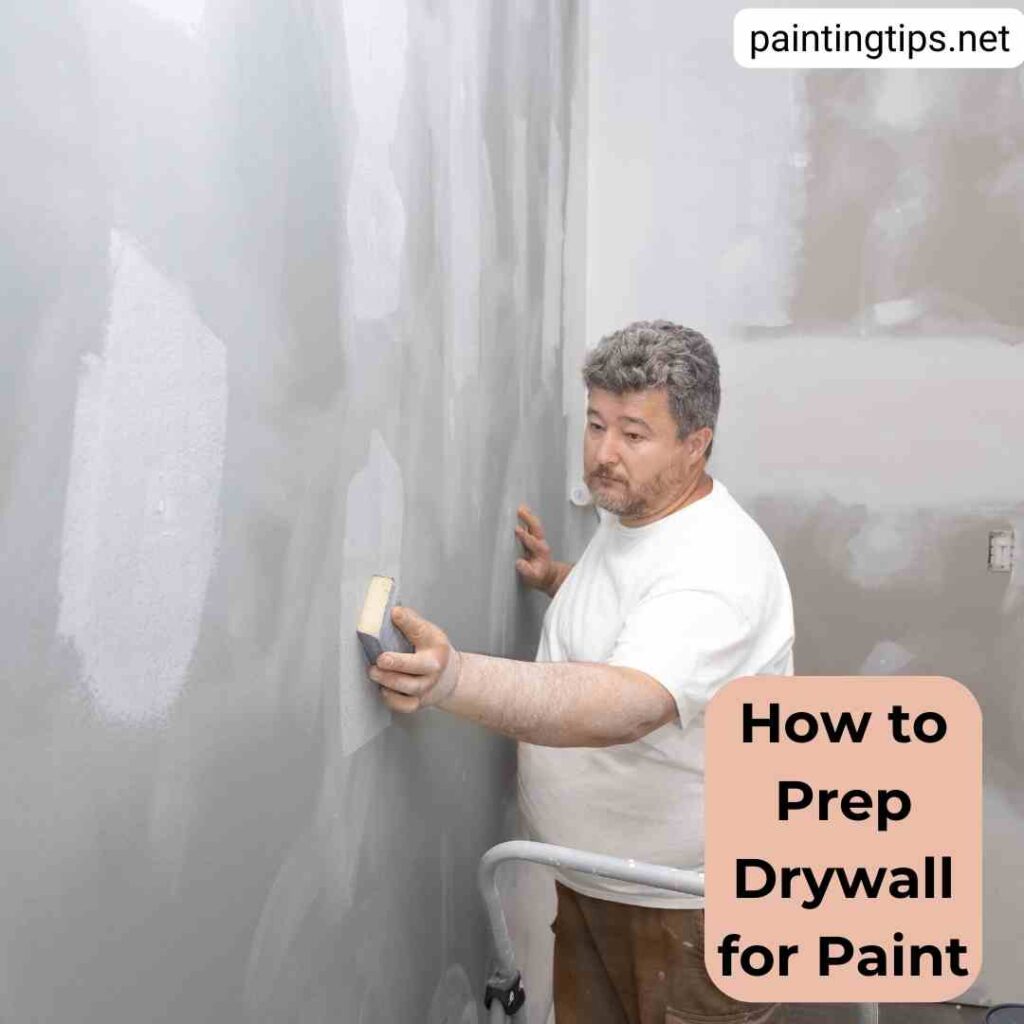
5. Remove All Dust
After sanding, wipe down the walls with a damp cloth or use a tack cloth to remove all dust particles. Dust left on the surface can create a rough texture and prevent the paint from sticking properly.

6. Apply a High-Quality Drywall Primer
Primer is crucial because it seals the drywall, prevents uneven paint absorption, and enhances adhesion. Choose a high-quality drywall primer and apply it evenly with a roller or brush. Make sure to cover the entire surface. Related article: “Do you need to primer before painting.”
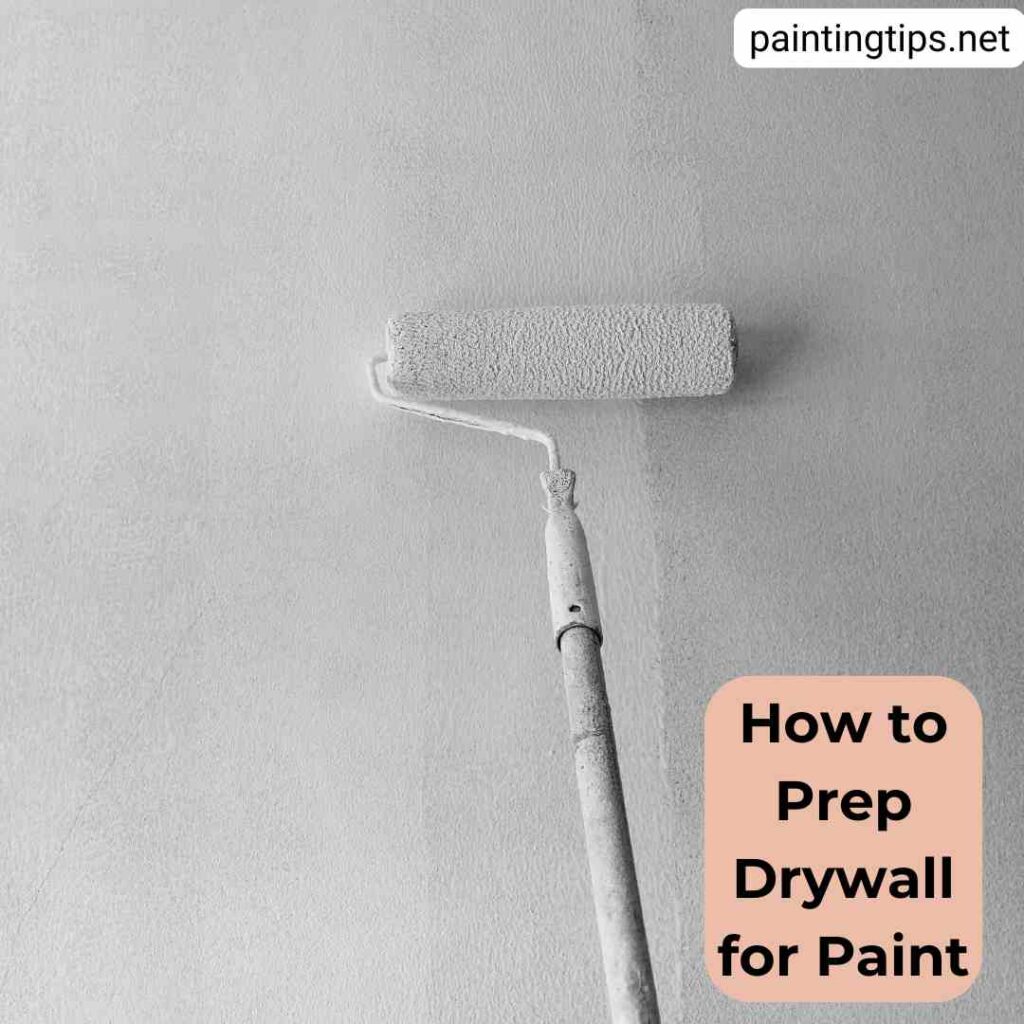
7. Let the Primer Dry Completely
Follow the drying time recommended on the primer label, usually a few hours. Avoid rushing this step, as painting over a wet primer can lead to streaks or an uneven finish.
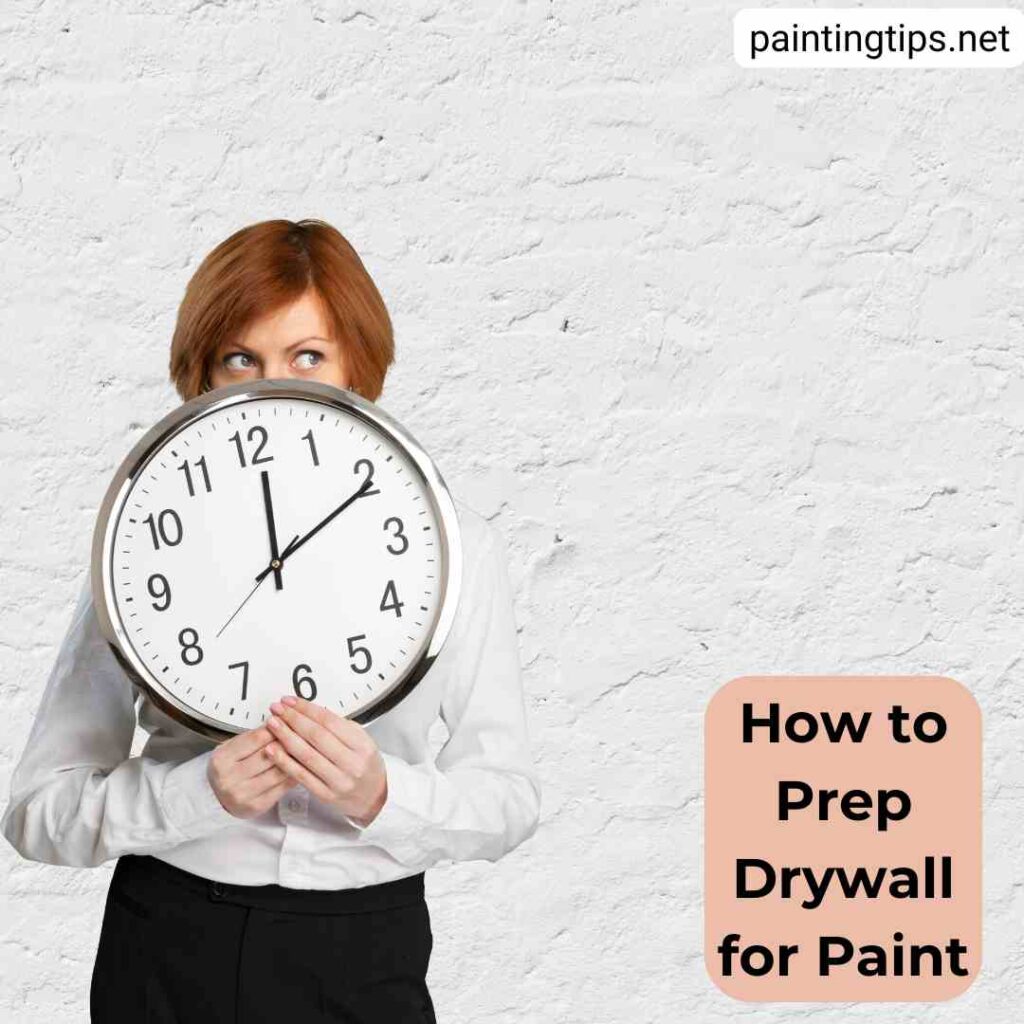
After the primer has fully dried, your drywall will be perfectly prepped for painting. “Related article: How long to wait between paint coats.” By following these steps, you can prevent the paint from peeling off the drywall and ensure a smooth finish.